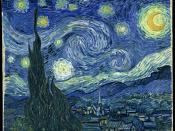The phenomenon of bipolar affective disorder is and has been a mystery for centuries. For many years it was known, as Manic Depressant Disorder is a mood disorder that involves episodes of both serious mania and depression. It's a serious illness, one that can lead to risky behavior, damaged relationships and careers, even suicidal tendencies -- if it's not treated. In our society many people live with bipolar disorder; however, despite the abundance of people suffering from it, we are still waiting for definite explanations for the causes and the cure. Because bipolar disorder has such debilitating symptoms, it is imperative that we remain vigilant in the quest for explanations of its causes and treatment.
Bipolar disorder is the third most common mood disorder after major depression and dysthymic disorder. It affects approximately 2.3 million American adults or 1.2% of the U.S population age 18 and older. The average age at onset for a manic episode is about 20 years old.
Without effective treatment, bipolar illness leads to suicide in nearly 20% of all cases. About 60% of all people with bipolar disorder have drug or alcohol dependence, seasonal depression, or certain anxiety disorders, like posttraumatic stress disorder (Webmd).
The classic form of the illness, which involves recurrent episodes of mania and depression, is called Bipolar I Disorder. Some people, however, never develop severe mania but instead experience milder episodes of hypomania that alternate with depression; this form of the illness is called Bipolar II Disorder. When four or more episodes of illness occur within a 12-month period, a person is said to have rapid-cycling bipolar disorder. Some people experience multiple episodes within a single week, or even within a single day. Rapid cycling tends to develop later in the course of illness and is more common among women...


